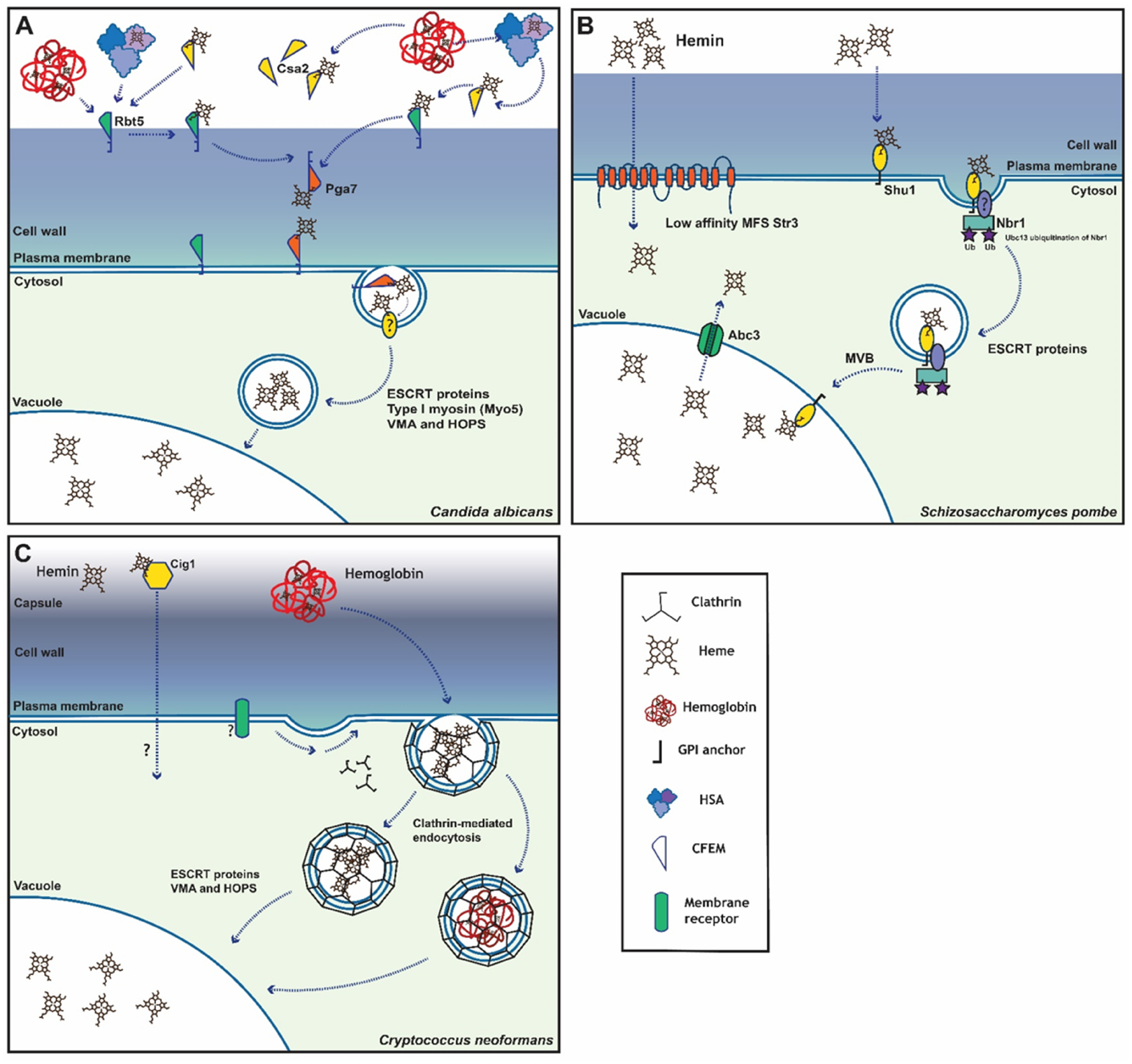Fig. 1 -. Overview of heme acquisition systems in pathogenic and model fungi. (A) Candida albicans, (B) Schizosaccharomyes pombe and (C) Cryptococcus neoformans.

As described in the main text, the system in C. albicans consists of CFEM proteins (i.e., Rbt5, Csa2 and Pga7) that form a relay network to access heme (e.g., from hemoglobin). Subsequent internalization involves endocytic trafficking and participation of the ESCRT system for delivery to the vacuole. For S. pombe, the Shu1 protein binds heme and translocates from the plasma membrane to the vacuolar membrane. The ESCRT system and the Nbr1 protein also participate in internalization, while the Abc3 transporter is thought to mobilize heme from the vacuole to the cytoplasm. A lower affinity heme uptake system also exists in S. pombe and requires the Str3 transporter of the major facilitator superfamily (MFS). The system for heme use in C. neoformans involves the mannoprotein Cig1 and the participation of the machinery for endocytosis as well as the ESCRT system.
